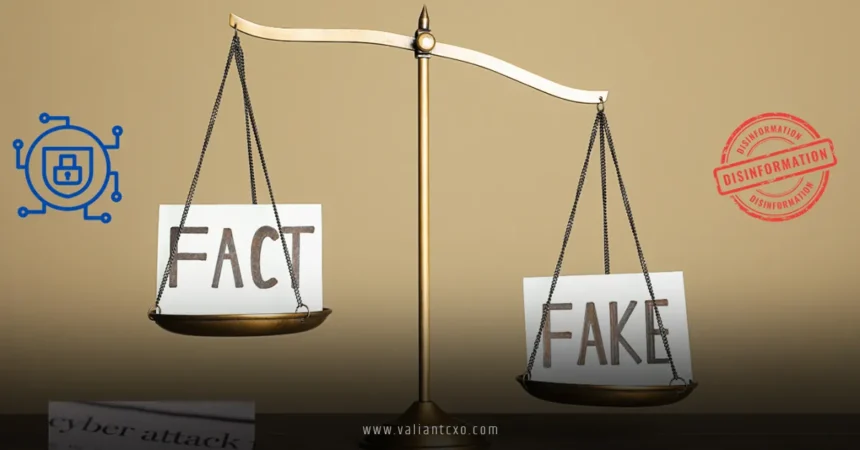Disinformation Security isn’t just a buzzword—it’s a critical shield in today’s information battlefield. Imagine a world where lies spread faster than wildfire, twisting perceptions and sowing chaos. That’s the reality we’re grappling with, and Disinformation Security is our defense against this invisible threat. From social media to news outlets, disinformation can manipulate minds and destabilize societies. So, how do we fight back? Let’s dive into the heart of Disinformation Security, exploring what it is, why it matters, and how we can all play a role in safeguarding truth.
What Is Disinformation Security?
Disinformation Security is the practice of protecting individuals, organizations, and societies from false or misleading information deliberately spread to deceive. Think of it as a digital immune system, detecting and neutralizing harmful lies before they infect the public’s trust. Unlike misinformation, which is often accidental, disinformation is intentional—a calculated move to manipulate narratives for political, financial, or social gain.
Why does this matter? Because disinformation can sway elections, fuel conspiracies, or even spark violence. It’s like a virus that exploits our connected world, spreading through clicks, shares, and retweets. Disinformation Security involves tools, strategies, and mindsets to identify, counter, and prevent these falsehoods from taking root.
The Anatomy of Disinformation
To understand Disinformation-Security, we need to dissect disinformation itself. It often hides in plain sight, dressed up as credible news or viral memes. Disinformation campaigns might involve:
- Fake News Articles: Crafted to mimic legitimate journalism, these stories prey on emotions like fear or anger.
- Deepfakes and Manipulated Media: Videos or images altered to show events that never happened.
- Bot Networks: Automated accounts amplify false narratives, making them seem widely accepted.
- Troll Farms: Groups paid to flood platforms with divisive or misleading content.
Each of these tactics exploits trust, making Disinformation-Security a race against human psychology as much as technology.
Why Disinformation Security Is More Important Than Ever
We’re living in an era where a single tweet can reach millions in seconds. That’s power—and danger. Disinformation-Security matters because the stakes are sky-high. A false claim about a vaccine can endanger lives. A manipulated video can ruin reputations. Entire democracies can wobble under the weight of coordinated lies.
The Ripple Effect of Disinformation
Disinformation doesn’t just mislead—it divides. It erodes trust in institutions, fuels polarization, and creates echo chambers where people only hear what confirms their biases. Without robust Disinformation-Security, we risk a world where truth becomes a casualty, and chaos reigns. Ever wonder why people believe wild conspiracies? It’s because disinformation preys on our fears and doubts, slipping past our defenses like a thief in the night.
Real-World Impacts
Consider the 2016 U.S. election, where foreign actors used disinformation to sow discord. Or the COVID-19 pandemic, where false cures and anti-vaccine narratives cost lives. These aren’t just stories—they’re warnings. Disinformation-Security isn’t abstract; it’s about protecting real people from real harm.
Key Strategies for Effective Disinformation Security
So, how do we build a fortress of Disinformation-Security? It’s not just about tech—it’s about people, processes, and persistence. Here’s a breakdown of practical strategies to combat disinformation.
1. Media Literacy: Arming People with Critical Thinking
The first line of defense in Disinformation-Security is education. If people can spot a lie, they’re less likely to spread it. Media literacy teaches us to question sources, check facts, and think critically. Ask yourself: Who’s behind this story? What’s their motive? Does this sound too wild to be true?
- Tip: Cross-check information with trusted sources like BBC News or Reuters.
- Action: Teach kids and adults alike to verify before they share. One click can amplify a lie—or stop it.
2. Technology as a Shield
Tech got us into this mess, and it can help get us out. [Disinformation Security] leans on tools like AI to detect deepfakes, track bot activity, and flag suspicious content. Platforms like X are stepping up, using algorithms to identify and demote false posts. But tech isn’t a silver bullet—it’s a tool, not a savior.
- Example: AI-driven fact-checking tools can scan articles for inconsistencies in seconds.
- Challenge: Bad actors evolve fast, so Disinformation Security tech must stay one step ahead.
3. Collaboration Across Borders
Disinformation doesn’t respect borders, so Disinformation Security requires global teamwork. Governments, tech companies, and NGOs must share data and strategies. Think of it like a neighborhood watch for the internet—everyone’s got to pitch in.
- Case Study: The EU’s Disinformation Code of Practice unites platforms to fight falsehoods transparently.
- Why It Works: Collective action creates a stronger net to catch lies before they spread.
4. Transparent Communication
Trust is the antidote to disinformation. Organizations practicing Disinformation Security must communicate clearly and honestly. If a company gets caught in a disinformation storm, owning up fast builds credibility. Hide the truth, and you’re handing ammunition to the liars.
The Role of Individuals in Disinformation Security
You don’t need to be a tech wizard to contribute to Disinformation Security. Every one of us has a role. Ever shared a post without checking it? We’ve all been there. But small actions can make a big difference.
Pause Before You Post
Next time you see a shocking headline, take a breath. Check the source. Google it. If it smells fishy, it probably is. Disinformation Security starts with you refusing to be a megaphone for lies.
Amplify the Truth
Found a reliable article? Share it. Correct a friend’s misconception politely. By spreading verified information, you’re building a ripple effect of trust. It’s like planting seeds of truth in a garden overrun with weeds.
Support Fact-Checkers
Organizations like Snopes or PolitiFact are Disinformation Security warriors. Donate, share their work, or use their resources to verify claims. They’re doing the heavy lifting—give them a hand.
Challenges in Implementing Disinformation Security
Let’s be real: Disinformation Security isn’t easy. Bad actors are crafty, and the internet is a wild west. Here are some hurdles we face:
1. Speed vs. Accuracy
Disinformation spreads like lightning, but fact-checking takes time. By the time a lie is debunked, it’s already gone viral. Disinformation Security must find ways to match the speed of falsehoods without sacrificing accuracy.
2. Balancing Free Speech
Censor too much, and you risk stifling free expression. Censor too little, and disinformation runs rampant. Disinformation Security walks a tightrope, trying to protect truth without trampling rights.
3. Global Scale
Disinformation campaigns often cross borders, languages, and cultures. Coordinating Disinformation Security globally is like herding cats—everyone’s got their own agenda.
The Future of Disinformation Security
What’s next for Disinformation Security ? The future is both exciting and daunting. Emerging tech like blockchain could verify information sources transparently. AI might get better at spotting lies in real-time. But as tech advances, so do the tactics of disinformation peddlers.
Education as the Long Game
Investing in media literacy now will pay off for generations. Imagine a world where kids grow up knowing how to spot a deepfake or question a sketchy headline. That’s the ultimate Disinformation Security win.
Policy and Regulation
Governments are waking up to the threat. Expect stricter laws on deepfakes, bot accounts, and false ads. But regulation must be smart—clumsy laws could backfire, harming Disinformation Security more than helping.
Community Power
The future of Disinformation Security lies in us—communities coming together to demand truth. Grassroots movements, citizen journalists, and everyday skeptics are the heart of this fight. We’re not just victims; we’re warriors.
Conclusion: Taking a Stand for Disinformation Security
Disinformation Security is more than a tech problem—it’s a human one. From fake news to deepfakes, the battle for truth is on, and we’re all soldiers in it. By sharpening our critical thinking, leveraging technology, and collaborating globally, we can protect the truth and keep disinformation at bay. It starts with you: pause, check, share wisely. Let’s build a world where lies don’t stand a chance. Ready to join the fight for Disinformation Security?
FAQs About Disinformation Security
1. What exactly does Disinformation Security protect against?
Disinformation Security guards against intentional lies spread to deceive, like fake news, deepfakes, or bot-driven propaganda. It’s about keeping truth safe in a world full of digital trickery.
2. How can I practice Disinformation Security in my daily life?
Simple: verify before you share. Check sources, cross-reference with trusted sites, and think critically. Pause before posting that viral story—it might be disinformation in disguise.
3. Why is disinformation so hard to stop?
Disinformation spreads fast, exploiting emotions and trust. Disinformation Security struggles to keep up because lies are cheap to produce, while truth takes time to verify.
4. Can technology alone solve the Disinformation Security problem?
No way. Tech like AI helps spot fakes, but Disinformation Security needs human smarts too—critical thinking, media literacy, and collective action are key to winning this fight.
5. How do I know if a source is trustworthy for Disinformation Security?
Look for transparency: Who’s behind the info? Do they cite evidence? Stick to reputable outlets like BBC News or fact-checking sites like Snopes.
For More Updates !! : valiantcxo.com


